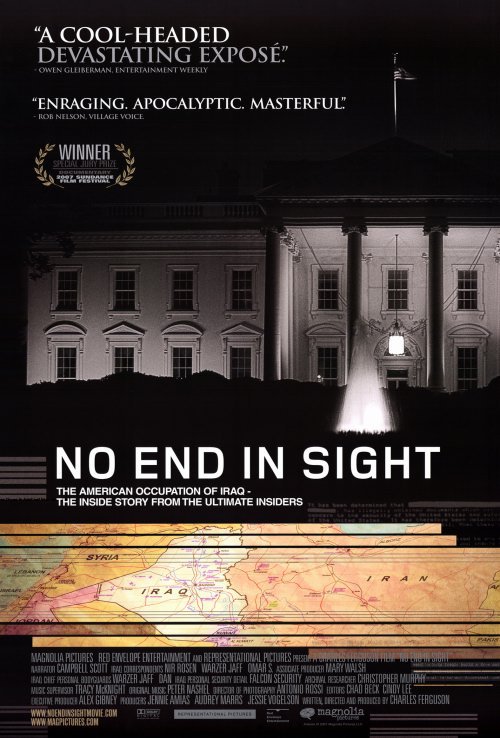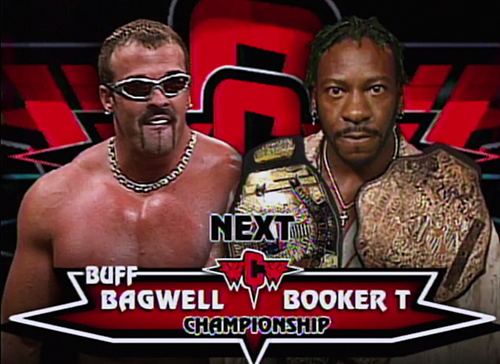
No End in Sight
Dir. Charles Ferguson
Premiered at Sundance January 22, 2007
In 1990, Iraq invaded Kuwait, violating international law. When the US took the initiative by pushing Iraqi dictator Saddam Hussein’s troops out of Kuwait, no expense was spared: the military had its biggest mobilization since World War II. President George H.W. Bush insisted “this will not be another Vietnam.” And he kept that promise.
But if it’s true that our leaders are always fighting the last war, God forbid an easy victory. That is the lesson, and the only lesson, of Charles Ferguson’s No End in Sight.
Covering the willful failure of US forces to prepare properly for an invasion and occupation of Iraq in 2003, No End in Sight largely glosses over the reasoning behind the war. While discussing the failures of intelligence– possibly deliberate– that led to the war happening is a legitimate discussion, it was also the only discussion the culture at large was having, particularly in the mid-2000s because of a really complicated scandal that I won’t bother trying to explain. And as most people who were against the war in Iraq were not pacifists, its bears analyzing the profound arrogance that led us, by the time of this documentary’s release, into the very nadir of one of America’s greatest military disasters.
As Ferguson interviews Iraqi civilians, combat veterans, policy experts, and administrators, most notably former Deputy Secretary of State (and not actor) Richard Armitage, a portrait of the Bush administration’s thought process emerges that is both embarrassing and terrifying. Plans had been made for the Iraq War since the election. It’s a testament to the administration’s laser focus on somehow engineering the Iraq War to be the defining struggle of a new generation, as if such things can be scheduled. In a matter of weeks, the planners assured, postwar Iraq would be harmonious, pro-America, led by Iraqi exile and notorious fraudster Ahmed Chalabi, and free of US combat troops.
And it was going to be awesome. It would be fought as cheaply as possible, using a fraction of the troops actually needed, with no armor, no extra batteries, no spare tires, no extra water. None of the people in the war planning trust had served in combat, most spoke no Arabic and had never been to the Middle East, and many still refused to visit. Never since Vietnam had US policymakers been so sure of success in a war purely on the grounds that they were Americans, and thus winners.
When the total absence of adequate troops enabled order to break down in the streets of Iraq, the official US policy was that the war was over, and any claims to the contrary were bad for morale. The film’s subjects, people who understood Iraq, were rebuffed. The White House refused to read any serious analysis and dismissed any serious consideration as naysaying and bad for morale.
No End in Sight holds up decently as a historical document. If you want to do this done wrong, dated, and incoherent, watch Fahrenheit 9/11. This is the adult version. Much like Fahrenheit 9/11, though, it consists of a lot of in-the-moment fury, and as a result gets competitive. For every paragraph I wrote above, the film has four or five people say the same thing over and over. Furthermore, the film offers little to no insight into the political culture that refused to hear any bad news, and while Cheney and Rumsfeld refused to participate in the film, their involvement wasn’t necessary for the PBS newsmagazine Frontline to do an excellent exposé on them around the same time. Frontline seems more like where this movie belongs. And hey, I love TV documentaries, I discovered the entire medium through television, but this is not a visual presentation worthy of the Sundance Film Festival.
How Did It Do?
No End in Sight was picked up by Magnolia, who released the film into theaters in July 2007, where it earned $1.4 million, a 96% fresh rating on RottenTomatoes, and an Academy Award nomination for best Documentary Feature. The film made a lot of year-end top-ten lists, and while the critical enthusiasm for the film was understandable at the time, this is a little extreme. Eleven movies in, it’s not at all clear that 2007 was a great movie year, but we’re getting there. No End in Sight isn’t even the best movie of this rather mediocre Sundance; it’s not coming close to my year-end faves.
Next Time: Son of Rambow
Advertisements Share this:




